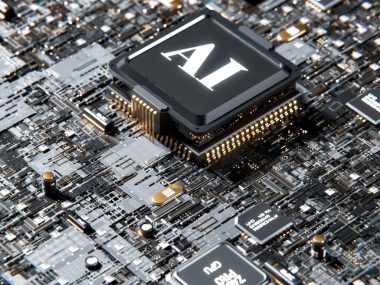AI is reshaping traditional software development. Successful AI-driven transformation in software strategies is leading to faster development cycles and higher quality software. John Campbell Crighton, CTO at Curantis Solutions, is harnessing AI to allow developers to focus on more creative and complex aspects of software design and problem-solving. “AI should be a force multiplier, enabling teams to achieve more while maintaining high standards of quality and security,” says John, who leads a team of developers innovating electronic medical record (EMR) software for better hospice and palliative care.
Integrating agentic AI to streamline software development and maintenance, John and his team have leveraged technology to help their clients improve government reporting. “Our event-driven architecture makes it possible to react quickly to changes within the system. It also makes it easier for users to use the system, navigate it, and to understand the status of all of their patients,” he says. The results have shown how smart integration of AI tools can help organizations innovate in their fields while helping users adapt to new changes. “We have a number of competitors that have been around for a long time. The hospice industry is slow to change on the technology side, but the improvements in medical records have made a compelling case for further innovation in this space,” shares Crighton.
AI-Powered Development: From Coding to Deployment
At Curantis, AI is embedded into multiple stages of the software development lifecycle, allowing developers to work with unprecedented speed and precision. “We’re using AI in each stage of software development. From coding aid in Visual Studio, our integrated development environment (IDE), to code reviews and automated testing,” explains John.
One of the most significant applications is AI-assisted coding within IDEs. AI-powered plugins analyze patterns and suggest code completions, allowing developers to write software more efficiently. Coupled with AI-driven code reviews to flag inefficiencies and errors before human reviewers step in, Curantis has experienced a drastic improvement in development speed and code quality. “Before, we had three to four code review cycles. By the time the errors have been detected and remediated with AI, the final code review has at most been one or two passes, freeing up our senior developers who conduct these reviews,” says John.
Integrating AI tools has also been proven transformative for automated testing. AI-generated unit tests catch potential issues before they become problems, ensuring new code integrates seamlessly with existing systems. By shifting the responsibility of remediation to the original developer — who best understands the code — Curantis has reduced development bottlenecks and enhanced overall software reliability.
The Rise of Agentic AI in DevOps
In his new role at Curantis, Crighton is pioneering the integration of AI within DevOps, where automation is essential for managing cloud infrastructure and continuous integration/continuous deployment (CI/CD) pipelines. “AI-driven approach to DevOps will be one of the most impactful advancements in 2025, significantly improving system stability and reducing operational overhead,” says Crighton.
John and his team of developers employ AI not only to optimize deployment pipelines but also to predict and proactively resolve potential system failures. “We have some of the best practices in DevOps. Since leveraging agentic AI to monitor the environment and react when things arise that will lead to problems further down the road, we’ve been able to save a ton of time on troubleshooting.”
Agentic AI plays a crucial role in his software strategy for Curantis. By monitoring infrastructure in real-time, AI-driven agents detect early warning signs of system failures and either alert staff or take corrective action automatically. Over time, these AI systems have learned from human interventions, gradually automating complex tasks with minimal oversight. This evolution allows DevOps teams to focus on higher-level innovation rather than routine troubleshooting.
Managing Change: Overcoming Resistance to AI Adoption
AI adoption comes with its challenges. One of the primary concerns within organizations is the fear that AI will replace human jobs. However, Crighton emphasizes that at Curantis, AI deployment focuses on enhancing productivity, rather than downsizing teams. “Our goal has always been to make our teams more efficient, not to replace them,” he explains. “Initially, there was some trepidation, but once our developers saw the tangible benefits — faster code reviews, fewer manual errors, and more time for creative problem-solving —any skepticism turned into enthusiasm. Now, team members are coming to us with their own ideas for AI applications.” This mindset shift has been key to successful AI adoption at Curantis. By positioning AI as a tool that empowers rather than replaces, Crighton has fostered smarter, human-led innovation.
Practical Steps for AI-Driven Transformation
For organizations looking to embark on their own AI transformation journeys, Crighton offers pragmatic advice: start small and iterate.
“There’s no one-size-fits-all AI solution,” he says. “Every development team has unique needs, so it’s important to begin with small, impactful AI integrations rather than attempting an all-encompassing overhaul.” Under John’s leadership, Curantis, for instance, leveraged off-the-shelf AI tools like GitHub Copilot for code generation and Codacy for automated code reviews. This hybrid approach, which combines readily available AI solutions with customized workflows, has allowed the company to scale AI adoption efficiently. “AI is just another tool in the developer’s toolkit. It requires monitoring, adjustments, and iterative improvements to be truly effective,” explains Crighton, emphasizing the importance of continuous refinement.
The Future of AI-Driven Software Development
Looking ahead, Crighton sees AI’s role expanding even further. The rise of generative AI and self-learning agentic systems will continue to streamline software development, meaning businesses — and the people on their teams — can innovate at an accelerated pace. For Curantis, the next big push is refining agentic AI capabilities, allowing the system to autonomously manage an increasing number of routine tasks. This shift will free up developers to focus on higher-order problem-solving and creative development — key differentiators in an increasingly competitive software landscape. “AI-driven software development provides a roadmap for organizations seeking to harness AI’s potential while maintaining human creativity and oversight,” says Crighton.
To learn more about John Campbell Crighton’s work, connect with him on LinkedIn or visit his website.











